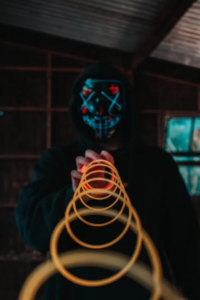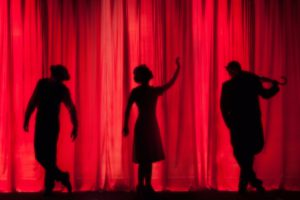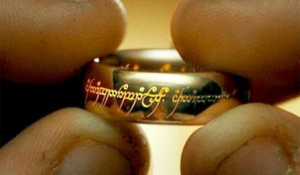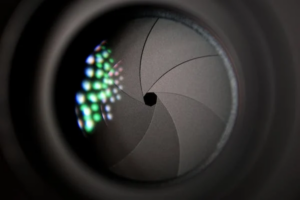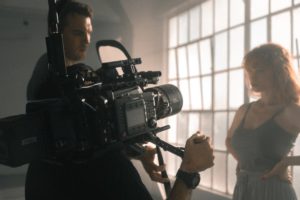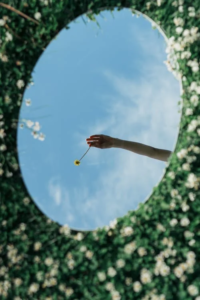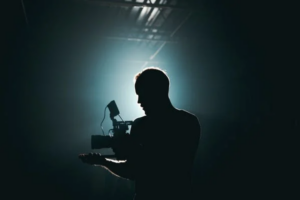An establishing shot is the first shot in a scene that provides an overview of the setting. It is often shot from above as an aerial shot, offering a view from a distance that helps the audience orient themselves to and identify the time and/or location in which the scene is occurring.
What Purpose Do Establishing Shots Serve?
Several trademark usages of an establishing shot include:
- Showing the relationship between the setting and characters
- Using aerial or wide shots to provide context on the geographical location
- Showing the passage of time
- Setting the mood and tone of a scene or potentially foreshadowing an event
- Grounding the scene in time
- Providing supporting details
- Introducing a new concept
An establishing shot is just one of many standard shot sizes used by filmmakers to convey various emotions and settings. It establishes the perspective the viewer needs to understand the narrative elements. Most of the shots that follow this shot come in tighter on characters, settings, and objects to provide additional context. When creating a shot list or setting up a storyboard, a director will typically include an establishing shot for each key scene.
Here is a tutorial on how to film an establishing shot:
Some Establishing Shot Examples
You can view a number of examples of excellent establishing shots in films across various genres in the following video, which highlights shots in “28 Weeks Later,” “The Dark Knight,” “Gangs of New York,” and several other films.
The Grand Budapest Hotel
In “The Grand Budapest Hotel,” director Wes Anderson uses a wide establishing shot to set the location and geography of the dinner scene, which is the hotel’s dining room, as well as the characters. The use of this shot also establishes the lighthearted tone of the film.

Scene from “The Grand Budapest Hotel”
The Shining
Stanley Kubrick’s haunting masterpiece, “The Shining,” provides another example of an establishing shot that juxtaposes the actual setting of the film with vast mountain ranges and rivers.

Scene from “The Shining”
Harry Potter
In the “Harry Potter” film franchise, many of the establishing scenes showcase Hogwarts, the school that serves as the setting for many of the following scenes. The passage of time is also established with shots that show snow-covered turrets on the school, indicating the change of seasons.
Guardians of the Galaxy
Establishing shots in space in “Guardians of the Galaxy” show the viewer which planet they will be visiting with Star-Lord and his crew.
Lord of the Rings: Return of the King
The detail of Gandalf on a galloping horse shown in the foreground of the establishing shot in “Lord of the Rings: Return of the King” provides balance to the frame while enhancing the visual appeal.
Tree of Life
Another establishing shot example is visible in “Tree of Life,” directed by Terrence Malick. He frames many of the shots in this film with natural elements.
Creative Ways to Use the Establishing Shot
Every filmmaker must identify the establishing shot that sets up each crucial scene in the plot. You can choose from several methods when setting up your scenes.
The Wide Shot
The wide shot is one of the most commonly used establishing shots, providing a wide look at the setting to expose viewers to this important detail. It may include details that indicate the timeframe for the scene. Filmmakers can use extreme wide or very wide shots for this purpose.
For example, in “Captain America: The First Avenger,” the establishing shot shows a wide shot of the New York City skyline, while the vehicles and buildings in the shot indicate that the timeframe is not present day.

Scene from “Captain America: The First Avenger”
The Classic Shot
If you want to establish a more targeted location as the setting for a scene, a classic shot works well for your establishing scene. For example, you might pan up on a particular building to indicate that the scene will take place on one floor of that structure.

Scene from “Fargo”
Incorporating the Story
Modern film directors have started incorporating elements of the story in the establishing shot of a scene. In “The Dark Knight,” the establishing shot closes in on a building that two criminals break into, emphasizing a key element of the plot.
When Not to Establish Geography
In some cases, filmmakers are skipping the establishing shot completely. Those who forego it may believe that the shot is uninteresting and doesn’t add much to the film. The choice to leave it out may also invoke an intentional sense of confusion or misdirection for viewers. “The Dark Knight” has a good example, when the scene shows Harvey Dent and Rachel in separate locations, awaiting death by explosion from the Joker. The misdirection leads the audience to believe Batman is rushing to save Rachel, only to find that Dent is the character he saves.
Viewers and critics may disagree with the choice to leave out an establishing scene. The director of “Batman vs. Superman” didn’t establish scenes with this type of shot, much to the dismay of many viewers.
Establishing Time
You can use an establishing shot to set up the time of the scene. You might use shots of the same location with differing elements, such as indications of the seasons changing, or speed up the footage to actually show the passage of time. For example, in “Hannibal,” the house is visible, but the sky darkens and lightens, showing that the scene is set in the following day.
 Scene from “Hannibal”
Scene from “Hannibal”
What Is the Difference Between an Establishing Shot and a Master Shot?
An establishing shot differs from the master shot in its length, as a master shot encompasses all the action of a scene from beginning to end, while an establishing shot usually only lasts for a few seconds.
How Are Establishing Shots Different From Other Shots in a Movie?
Establishing shots are different from other shots in several key ways. An establishing shot:
- Usually lasts only a few seconds
- Doesn’t evoke much emotion
- Rarely include the characters
- Doesn’t usually include dialogue (although if it does, the dialogue is referred to as pre-lap)
- May include stock footage
To learn more about developing and applying techniques like adding establishing shots, join the Cinema Product Diploma program at the Nashville Film Institute today.

